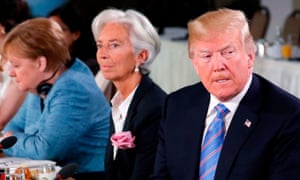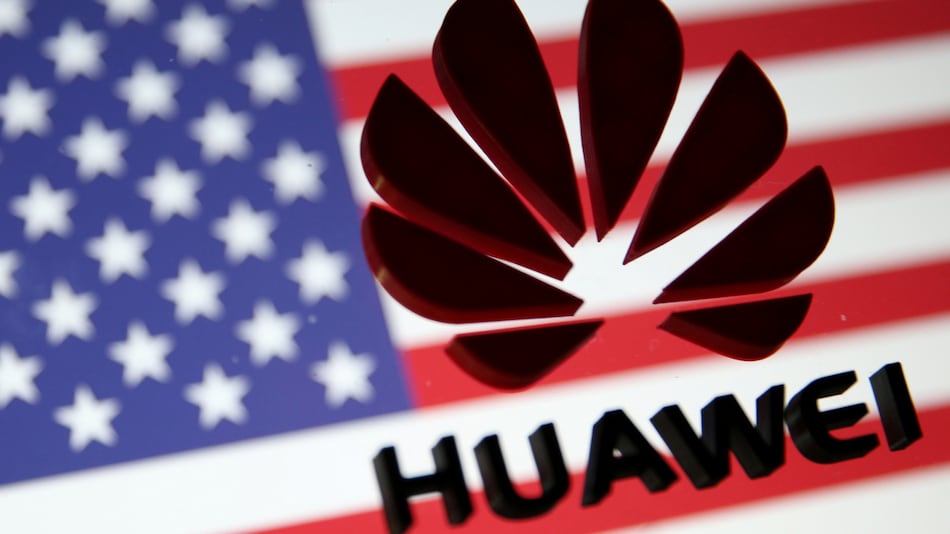
Who was there?
The G7 is attended by the leaders of the seven main western economies, and has been seen as a chance for world leaders to discuss the chief diplomatic and economic issues of the day. Leaders from the US, France, Canada, Germany Japan, Italy and the UK attend. EU officials also attend, as do chiefs from multilateral bodies such as the IMF. Russia used to attend the event, but it was blackballed following the 2014 annexation of Crimea. Since its inception in 1975, its tone is supposed to be gentle – as much fireside chat as firefighting. A G7 shibboleth is support for free trade, and a rules-based world order.
What was said?
Donald Trump’s now infamous blow-up occurred as much before and after the summit, as during it.
In the run-up, the US president announced he was slapping tariffs on EU steel and aluminium, called for Russia to be re-invited to the summit and then derided the World Trade Organization, the body that polices trade. Trump, his mind evidently on his upcoming summit with North Korea, showed his disdain by arriving late for key sessions, such as on gender equality, and leaving early, avoiding the climate change session, giving him a chance to hold a press conference before the hosts to ensure his account of the summit broke first.
In essence, he said he had nothing personal against other world leaders, but the generosity of previous US presidents had left him with the unpleasant task of requiring Europe and Canada to stop ripping America off.

Despite personal relations with other leaders being at a level of “10 out of 10”, he said: “We’re like the piggy bank that everybody is robbing… It’s going to stop now or we’ll stop trading with them [other nations].” The tone was that of a man in possession of incontrovertible proof of a decades-long European heist. “The gig is up,” he said.
If his relationship with Justin Trudeau was at 10 at the summit, it fell to zero when Trump – 30,000ft up in Air Force One – became infuriated by an account of the Canadian prime minister’s closing press conference. In a two-tweet tirade he accused Trudeau of making false statements, adding he was dishonest and weak, and only appeared meek and mild. He declared he was un-signing the communique.
His advisers then took the insults to the next level. Larry Kudlow, the president’s economic adviser, said Trudeau’s comments were “a betrayal” and that he had “stabbed us in the back”. Trump “is not going to let a Canadian prime minister push him around”. Peter Navarro, the president’s trade adviser, was even harsher: “There’s a special place in hell for any foreign leader that engages in bad-faith diplomacy with President Donald J Trump and then tries to stab him in the back on the way out the door.”
Did Trudeau miscalculate?
Reporters at Trudeau’s Saturday press conference, including from the New York Times, thought Trudeau went out of his way to be emollient about Trump, content he had cajoled Trump into signing the joint communique. He understood his role as host and co-ordinator.
In probably his most aggressive remark, he said Canada was not going to be pushed around, and added he found it “insulting” that the US had justified extra tariffs on Canada by labelling its neighbour and military ally a security risk. Trump took this as evidence that Trudeau was two-faced. His judgment, presumably, is that his political base cannot get enough of the president “standing up for America”.
Does Trump have a point about Canada and the EU?
US tariffs are lower than those of the EU and Canada but the difference is marginal. WTO statistics show that the EU’s average trade-weighted tariff was 3% in 2015, the latest year for which this figure was available. Canada’s average trade-weighted tariff was 3.1% compared with 2.4% for the US.
The US also has a trade surplus with Canada. At best, Trump is being pointlessly selective with his facts, ignoring the complex trade-offs, and taking no account of how his own policies feed a US consumer boom.
The US and the EU have had innumerable previous rows about trade, but right now on climate change, Iran, Nato, Russia and trade, the president is willing not just to differ with the rest of the west, but to challenge and undermine it.
A horrified European political establishment sees Trump, like Vladimir Putin, backing the populists of Europe, especially in eastern Europe, Austria and Italy. These are forces that threaten the liberal order in a way that Emmanuel Macron, Theresa May and Angela Merkel are only beginning to understand.
The former UK Foreign Office permanent secretary Simon Fraser for instance sounded genuinely alarmed when he tweeted: “Conventional wisdom is that Trump is a blip & normal service will one day be resumed. This is too complacent. The deeper, even more worrying question: are US values, priorities & interests fundamentally diverging from Europe? We should be seriously worried by what has just happened in G7.”
The Europeans’ answer lies in managing Trump, including at the imminent Nato summit, but also strengthening Europe’s economic and security independence. But these are painstaking tasks, requiring long talks between German and French finance ministers, and discussion of a new European strategic defence culture.
source:-.theguardian



